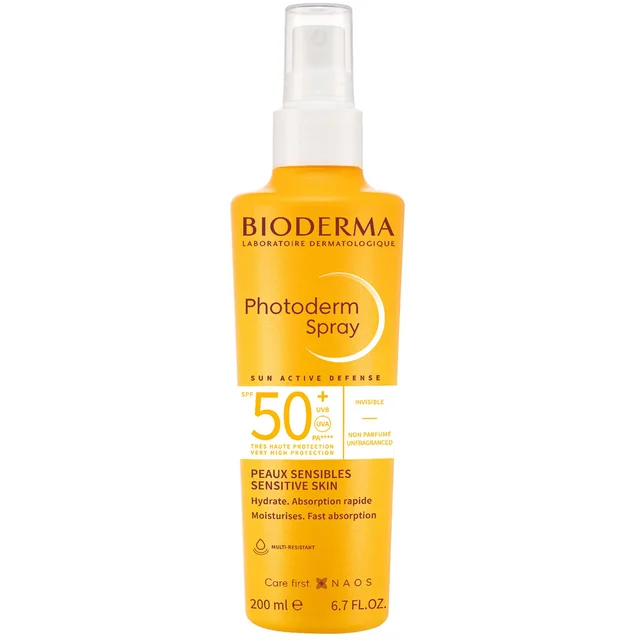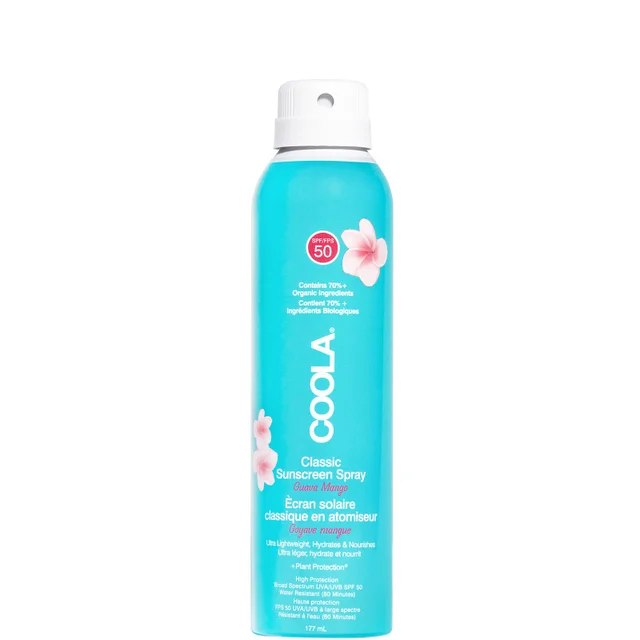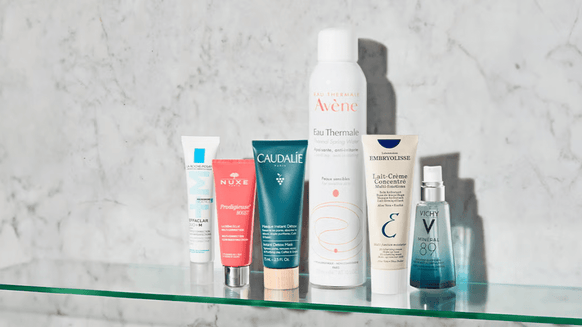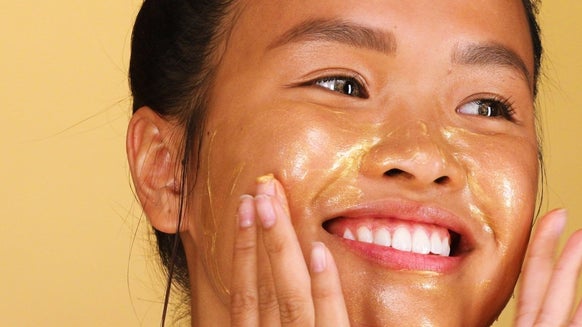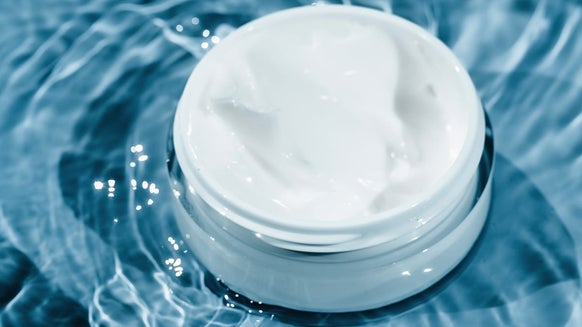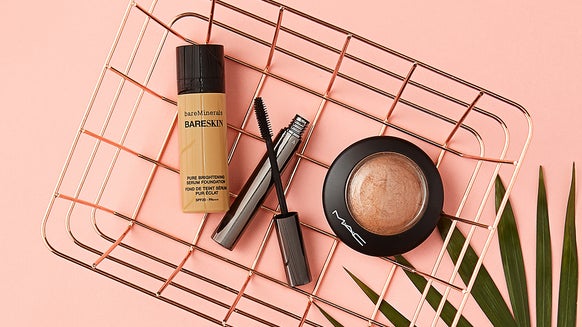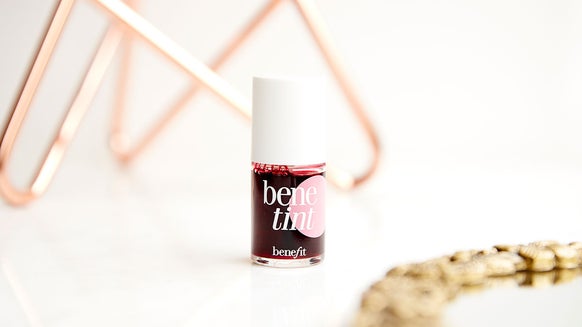Everything you need to know about skin cancer, according to the experts
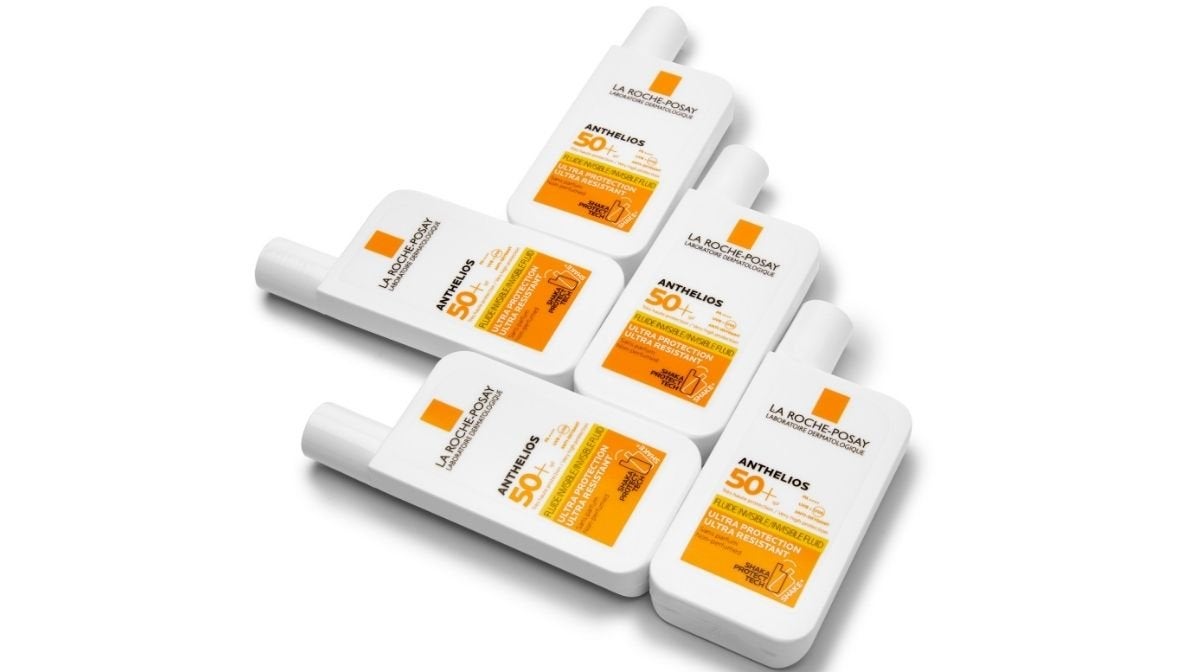
As a trained pharmacist, I can tell you we get a lot of queries from patients regarding melanoma, in particular the causes, symptoms, and prevention. Seeing as it’s Skin Cancer Awareness month, it’s the perfect time to shed some light on such an important and pivotal topic. The NHS reports that ‘around 16,000 new cases of melanoma are diagnosed each year”, and perhaps more shockingly, “more than 1 in 4 skin cancer cases are diagnosed in people under 50.”
Skin cancer is extremely common in the UK, and figures are only increasing. To help showcase the facts and shun the myths, LOOKFANTASTIC have teamed up with skin cancer charity, Melanoma Focus, to tell us everything we need to know about skin cancer. Susanna Daniels, CEO and spokesperson for the charity, reveals her expert guide to staying sun-safe...
Who are Melanoma Focus?
Who better to introduce this wonderful charity than the CEO and spokesperson herself, Susanna Daniels: “Melanoma Focus is a national charity. It was set up ten years ago by my predecessor who merged two medical charities, so the focus really was about medical education and research, which we still do very much.” The charity is an excellent point of call for facts and guidance on all things melanoma, providing support for people who are diagnosed with skin cancer, as well carers and healthcare professionals.
What is melanoma?
It’s highly unlikely you haven’t heard of melanoma before, but what exactly is it, and why is it such a key topic as we head into the hotter months of the year?
“Melanoma is the most serious form of skin cancer; it is where the melanocytes which are the pigment producing cells grow out of control,” says Susanna. And although it’s likely you’ve heard of the risk of melanoma; the Melanoma Focus stats speak for themselves:
- “Melanoma is the 5th most common cancer in the UK and rising.”
- “Melanoma is the 2nd most common cancer in males between the ages of 15-44 years of age.”
- “Melanoma is the 3rd most common cancer in females between the ages of 15-44 years of age.”
What are the main causes of melanoma?
Susanna reveals that “the main causes of melanoma are UV light emitted from UVA and UVB rays from the sun and sunbeds.”
We know SPF is a reliable way to protect your skin from the sun’s harmful UVA and UVB rays, so make sure to stock up and apply daily. But sadly, your weekly tanning session at the salon is a habit you might want to re-think from here on out.
What are the different stages of melanoma?
Susanna breaks melanoma down into five stages:
“Melanoma in situ (stage 0) is where there is one layer of melanoma cells on the skin’s surface. Once they have been removed immediately there is no further follow-up. You just need to be cautious about your suncare.”
Then come stages 1, 2, 3 and 4, which are broken down further into sub-categories:
“Stages 1 and 2 are really classed as early stages of melanoma. The majority are diagnosed at an earlier stage and the prognosis (the likely outcome) is generally better at this earlier stage.” Susanna explains.
“Stages 3 and 4 are classed as later stages of melanoma where the melanoma has spread to the lymph nodes and/or other parts of your body. The prognosis is more uncertain but thankfully in the last 10 years, there are treatments option available including immunotherapy treatments and targeted therapies – which is fantastic. There are people living alongside their advanced melanoma, however sadly, there are over 2,300 deaths from melanoma each year in the UK.”
Are some people more at risk than others of getting melanoma?
Susanna shares some of the potential risk factors:
- Fair skin types
- Often red hair
- Skin that easily burns or if you frequently burn
- If you have lots of moles/freckles
- Family history of melanoma
Your skin type and genetics can put you more at risk of contracting melanoma. However, if you are exposed to the sun without protection, you are putting yourself at risk, regardless of your skin type.
What are the common signs and symptoms of melanoma to look out for?
Though it might be scary to talk about the reality of melanoma, it’s important to understand the signs to look out for. Susanna explains, “The most significant sign that I would like to point out is a changing mole or lesion that can be noticed in the earlier stages.”
As a pharmacist, there is a common acronym I use to advise my patients on changes to moles and skin lesions: THE ABCDE Rule. Susanna even goes one step further with the (updated) ABCDEF Rule:
“It fits in with the most common type of melanoma, which is the superficial spreading of melanoma,” she tells us. The general rule of thumb when it comes deciding whether to get a mole checked by your GP is as follows:
- A is for Asymmetry – if you put a mirror down the centre and it's not a mirrored image.
- B is for Border – if the edges are irregular.
- C is for Colour – if you notice a difference in colour, or a few of colours are visible.
- D is for Diameter – if the size above 6 mm (although smaller moles can be melanoma too).
- E is for Evolving – if you’ve noticed any changes to your mole, if it has grown or changed shape.
- F is for Funny – if your mole looks funny or odd to you.
However, symptoms may look a little different if the melanoma has progressed. “In the later stages, the symptoms might be different and more non-specific. As with many other cancers, stage 4 is when the cancer has spread to the other parts of the body. You might have raised lymph nodes or glands if it has travelled to the lymph system, or headaches if it has unfortunately travelled to the brain.”
If you are experiencing any of the latter symptoms, please don’t panic – they can also be symptoms of something else! It’s also normal for there to be changes in the appearance and number of moles during hormonal changes in women, where moles can increase and get darker, for example in pregnancy. But as Susanna has said, it’s always better to air on the side of caution.
Remember: if in doubt, check it out.
Are there any parts of the body I should pay close attention to when checking my moles?
I often advise my patients to check themselves at least once a month using a full-length mirror. After a shower or bath is the perfect time – make sure to get a really good look at your skin. Susanna even recommends recruiting a helping hand to be on the safe side:
“Check yourself and your loved ones, approximately once a month. The areas that some people tend to forget about in particular are the soles of your feet and in between the toes.”
What’s more, certain areas of the body can be more at risk of developing melanoma. “For males it more likely to be on the trunk of the body or the back, as they tend to be topless when they are exposed to the sun. For females it might be on the legs or on the arms. It really is whichever area is exposed to the sun; any exposed skin, that’s where melanoma tends to form.” Men and women should also take care to check and protect the scalp, especially if you have thin or sparse strands.
Always be thorough when you’re checking your skin. If anything looks suspicious, phone your GP and make an appointment.
What should I do if I notice a change to a mole or patch of skin?
Firstly, as above, if you’ve noticed a change to your mole or an area of skin, pick up the phone and give your GP a call.
“They may ask you to take a photo and send it to them, using a secure system. Essentially, teledermatology is where a photograph is sent to a skin specialist or dermatologist, and the process ensures that you can get a swift review by a consultant dermatologist,” Susanna explains. “The dermatologist will then make an assessment regarding the image provided. Just because you get called for an appointment doesn’t mean you have a melanoma.”
That bring us nicely to our second piece of advice: don’t panic!
And lastly, always get your moles checked and removed by a medical professional. Susanna explains, “If you get your mole or lesion taken off by the NHS, they will always check and test the mole and look at the cells to see what is being removed. If you get it checked via a more cosmetic route, they may not test the mole and may only remove the it. Avoid getting any moles removed via a cosmetic route.”
What does the future of melanoma testing look like?
Some pharmacies are starting to offer mole scanning services. There are also new approaches surfacing via apps and mobile phones, using photo technology to detect melanoma cancer. Susanna has noticed a modern shift to the way we test for melanoma too, but she ends with a word of warning:
“We have approached the British Association of Dermatologists for advice as they have a working group currently looking into this area. Their position is that artificial intelligence (known as AI) is a rapidly advancing area which holds great promise for the future. However, the current evidence for effectiveness and safety of apps for diagnosing melanoma is limited.”
How can I protect my skin from melanoma?
After two years of lockdowns and another miserable entrance into UK summer, it’s unsurprising that many are heading off for long-overdue holidays in the sun. But in addition to wearing a sunhat and UV protection sunglasses, we should remember that suncream is crucial.
Susanna reveals a shocking statistic, “‘Melanoma is 86% preventable. Approximately 9 in 10 cases and can be prevented by using sun protection and avoiding sunbeds.”
She continues: “You should be using suncream of SPF30 or above and 4 or 5 star UVA protection! Also try to stay in the shade during the hottest hours of the day, which is normally between 11am and 3pm. Take a broad spectrum suncream suited to your specific skin type. There are so many different types of SPF formulations available – sprays, colourless lotions, fragrance-free – there is so much available. Apply liberally and use whatever formulation works for you.”
The recommended dose of suncream is half a teaspoon or two finger lengths.
How can consumers contribute to Melanoma Focus?
Melanoma Focus is an excellent charity that supports patients, carers, healthcare professionals and the general public with the information they need to help spread the word on melanoma safety. The charity funds clinical research studies to help develop a further understanding of melanoma and produces various important guidelines. A confidential Helpline run by experienced skin cancer nurse specialists is available to help anyone with a concern about a melanoma diagnosis or treatment (they can not diagnose melanomas over the phone).
“As experts in melanoma, we are a trusted source of support and information. If anyone has any concerns regarding melanoma or knows anyone that is concerned, visit our website melanomafocus.org. We are hugely grateful for any donations and for the incredible fundraisers who kindly do amazing things to support us, so please check the website for more information.”
Aruj's Top SPFs:
I am always keen to try new beauty products and love keeping up with the latest beauty trends and launches – it helps me to feel and look my best as a healthcare professional. I like to keep my skincare routine full of skin-beneficial ingredients. At the moment I’m enjoying the Indeed Labs Hydraluron range and Clinique’s three-step Anti-Blemish range.


